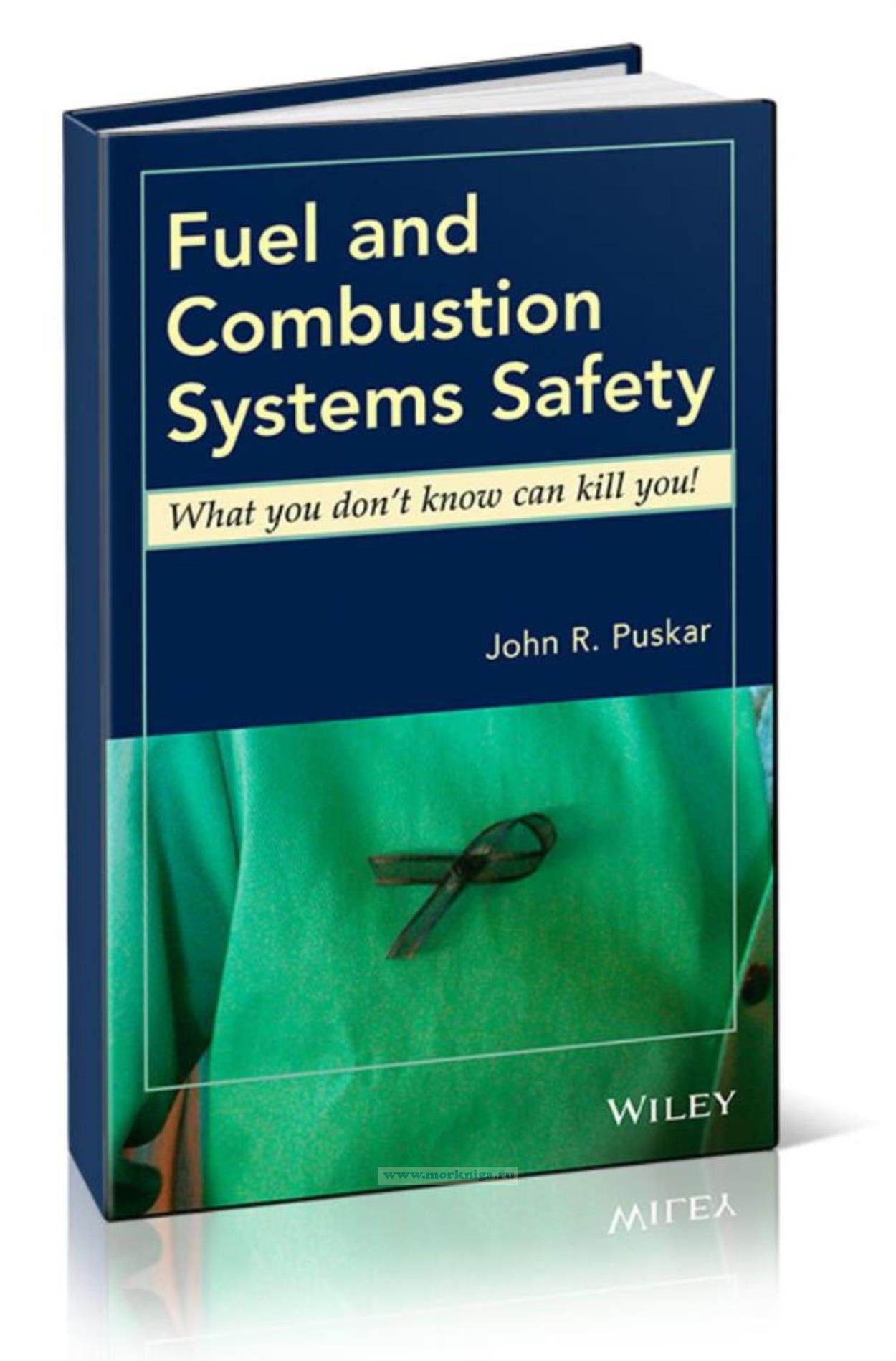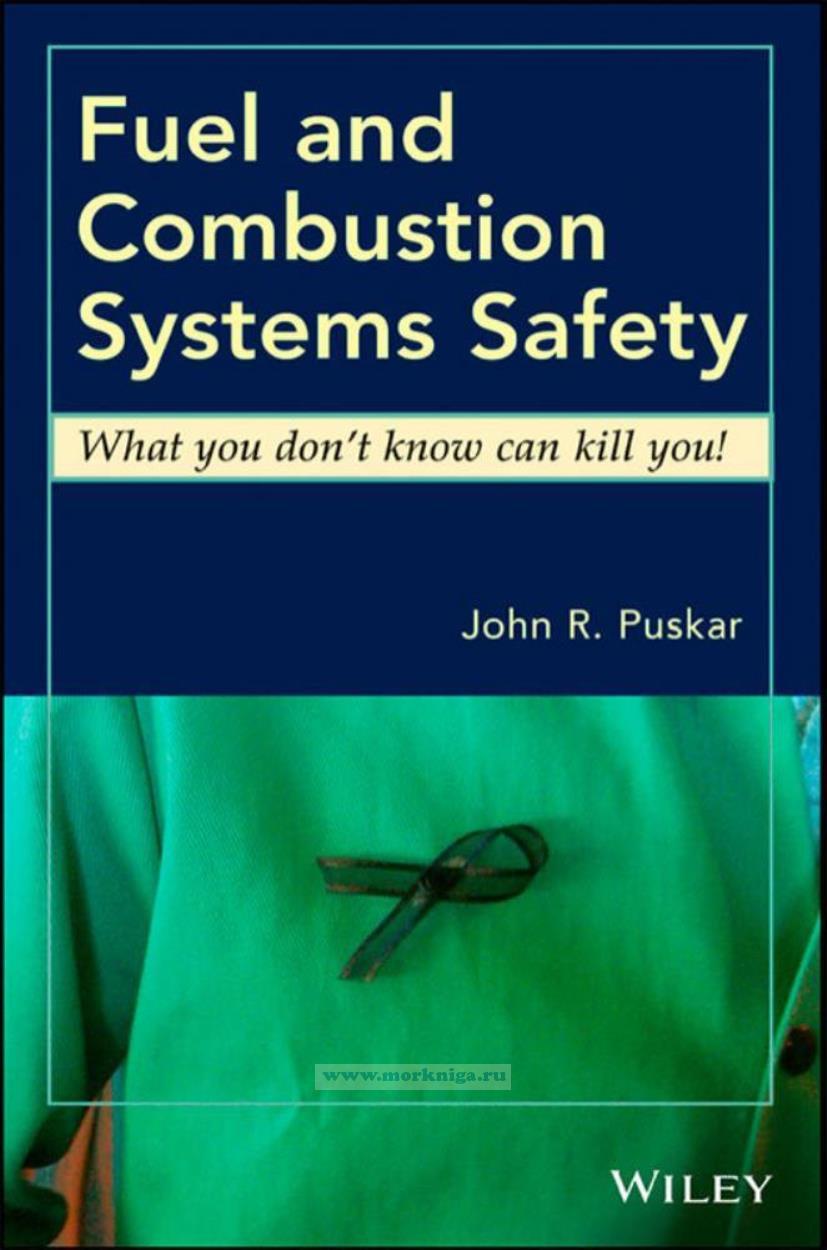Fuel and Combustion Systems Safety/Безопасность топливных систем и систем сжигания
Книга на английском языке.
Based on the author's thirty years of hands-on experience working in the field of industrial fuel systems and combustion equipment safety, this book integrates safety codes with practical, tested, and proven guidance that makes it viable to specify, operate, and maintain industrial fuel and combustion systems as safely as possible. Readers will learn about fuels, piping, combustion, controls, and risks from more than fifty "real-life stories" the author has integrated into each chapter so one can immediately see and understand the concepts presented.
The incidents depicted resulted in forty-six deaths, hundreds of serious injuries, and billions of dollars in losses. Each example is followed by lessons learned, helping readers understand what could have been done to avoid the disaster or minimize the resulting destruction of life and property.
Contents
Foreword
Preface
1 What You Don’t Know Can Kill You
1.1 Knowledge Gaps in Operating Fuel Systems and Combustion Equipment
1.2 Managing Fuel Systems and Combustion Equipment Risks
1.3 The Creation of Fuel Systems and Combustion Equipment Codes and Standards
1.4 Fuel System Codes and Standards
1.5 Combustion Equipment Codes and Standards
1.6 Other Widely Recognized Code- and Standards-Related Organizations
1.7 Safety Instrumented Systems and Safety Integrity Levels
1.8 The World of Insurance and Combustion Equipment
1.9 Personal Criminal Liability
Notes and References
2 Combustion Basics
2.1 Combustion Defined
2.2 Fuels
2.3 Heat/Ignition
2.4 Oxygen/Air
2.5 Combustion Chemistry
2.6 Environmental Emission Issues
2.7 Basic Burner Design Issues
2.8 Draft Systems
2.9 Understanding and Evaluating Flames
2.10 Fuel/Air Ratio Evaluations
Notes and References
3 Natural Gas Piping Basics
3.1 Natural Gas Piping Codes and Standards
3.2 General Industrial Utilities Piping Fundamentals
3.3 Manual Isolation Valves
3.4 Blanks or Blinds
3.5 Steel Pipe Joining Methods
3.6 Fastener Issues: When a Bolt Is Not Simply a Bolt
Notes and References
4 Gas Supply System Issues
4.1 Incoming Natural Gas Systems
4.2 Piping Corrosion Protection
4.3 Considerations for Limiting Access to Service Entrances
4.4 Gas Supplies From Digesters and Landfills
4.5 Incoming Propane Service Considerations
Notes and References
5 Gas Piping Repairs and Cleaning
5.1 Key Steps to Safe Gas Piping Repairs
5.2 Planning the Project
5.3 Isolation
5.4 Prerepair Venting and Purging of Flammable Gases
5.5 Leak Checking and Pressure Testing
5.6 Postrepair Purge
5.7 Reintroduction of Natural Gas: Startup
5.8 Gas Sampling and Detection
5.9 Nitrogen-Handling Issues to Consider
5.10 The World of Gas Line Cleaning
5.11 NFPA 54: Changes Related to Purging Issues
5.12 Highlights of and Commentary Regarding the New
Notes and References
6 Understanding Fuel Trains and Combustion Equipment
6.1 Fuel Train Components and Their Purpose
6.2 Basic Operations of Fuel Trains
6.3 Oil Firing Systems
6.4 Oven and Furnace Types
Notes and References
7 Understanding Boilers and Their Special Risks
7.1 Boiler Incident Statistics
7.2 Boiler Types
7.3 Boiler-Water-Level Safety Devices
7.4 Boiler Pressure Safety Controls
7.5 Safety Relief Valves
7.6 Steam System Piping Special Issues
Notes and References
8 Controlling Combustion Risks: People
8.1 Personnel Issues
8.2 Training
8.3 Culture Changes
8.4 Human Layers of Protection Analysis
8.5 Contractor Issues
Notes and References
9 Controlling Combustion Risks: Policies
9.1 Policy Commandments for Fuel and Combustion System Safety
9.2 Commandment I
9.3 Commandment II
9.4 Commandment III
9.5 Commandment IV
9.6 Commandment V
9.7 Commandment VI
9.8 Commandment VII
9.9 Commandment VIII
9.10 Commandment IX
9.11 Commandment X
Notes and References
10 Controlling Combustion Risks: Equipment
10.1 Controlling Equipment Risks
10.2 Testing of Fuel Train Safety Interlocks
10.3 Rebuilt Safety Controls
10.4 Valve Seat Leakage Tightness Testing
10.5 Refractory and Equipment Outer Skin Problems
Notes and References
11 Global Perspective on Fuel and Combustion System Risks
11.1 Global Perspectives on Fuel and Combustion System Risks
11.2 Highlights of the European Combustion World
11.3 Fuel System Risks in Other Countries
11.4 Differences in Types of Systems and Equipment From U.S. to Foreign Operations
11.5 Fuel Issues
Notes and References
12 Business Contingency Planning
12.1 Business Interruptions From Fuel and Combustion Systems
12.2 Sparing Philosophies for Components
12.3 Flood and Water Damage
12.4 When There is an Incident
12.5 Conclusion
Notes and References
Appendix: Analysis of Real-Life Stories
Index

